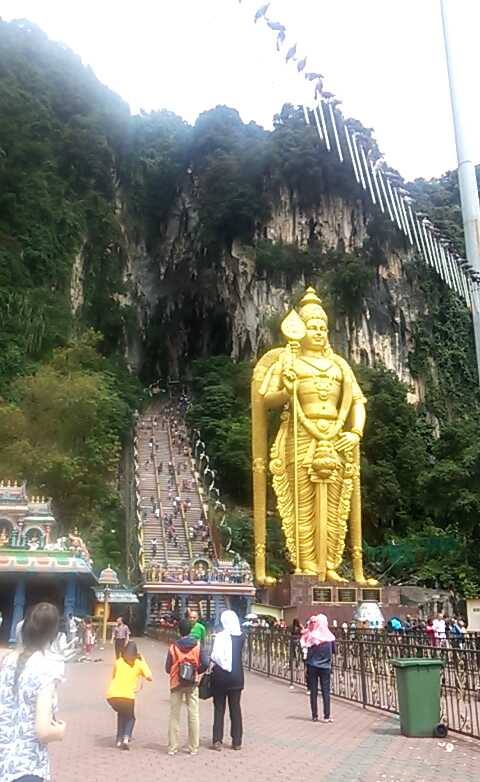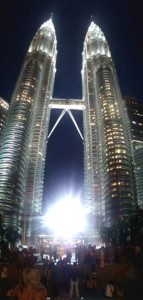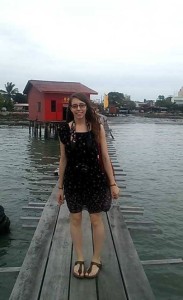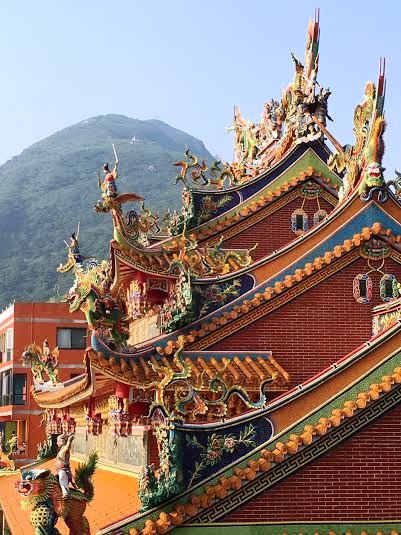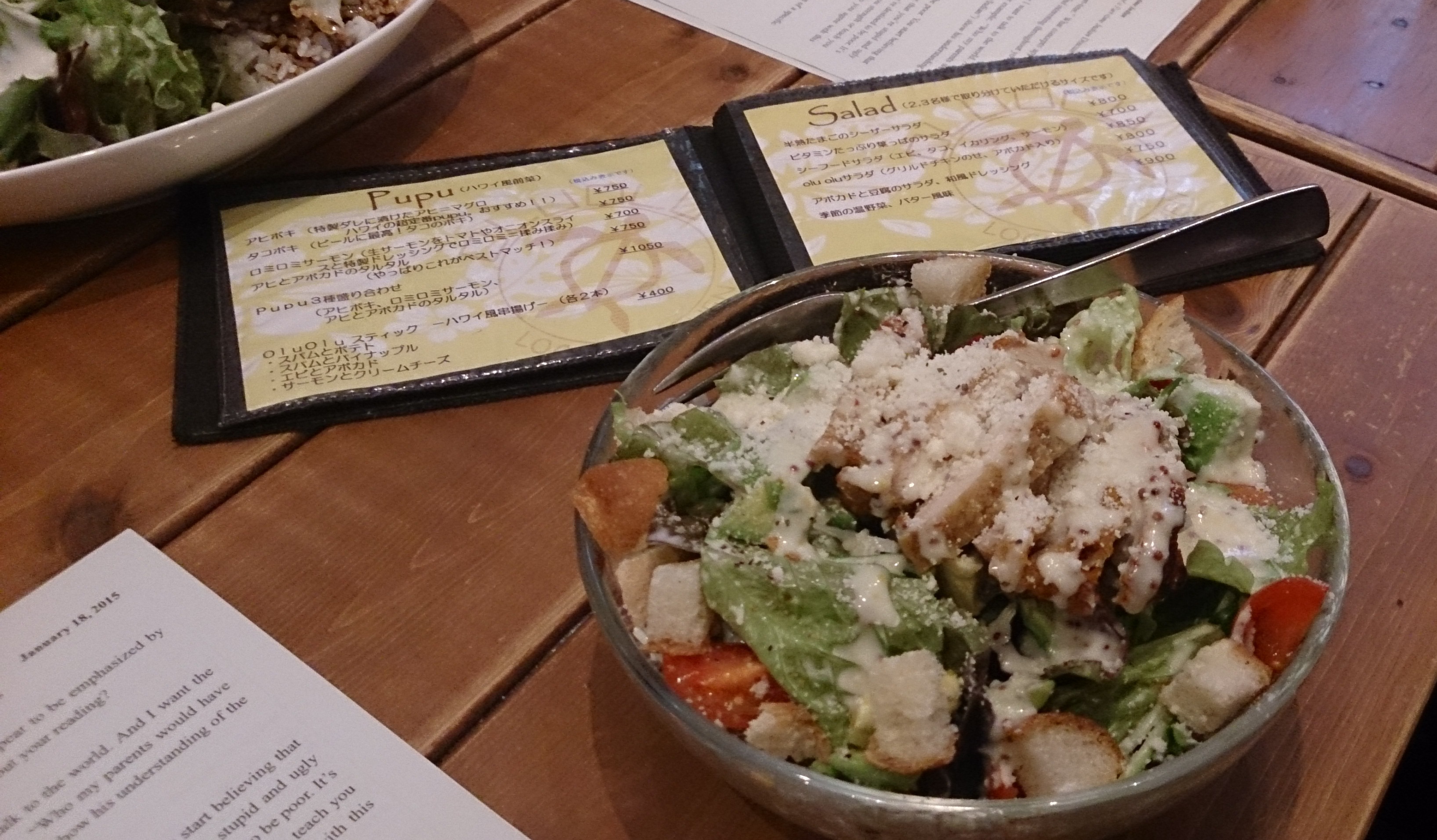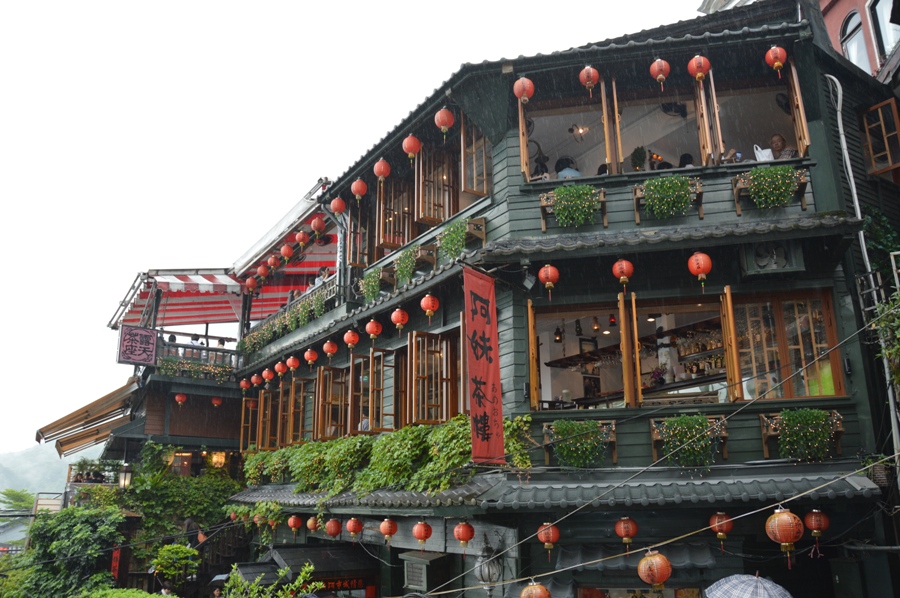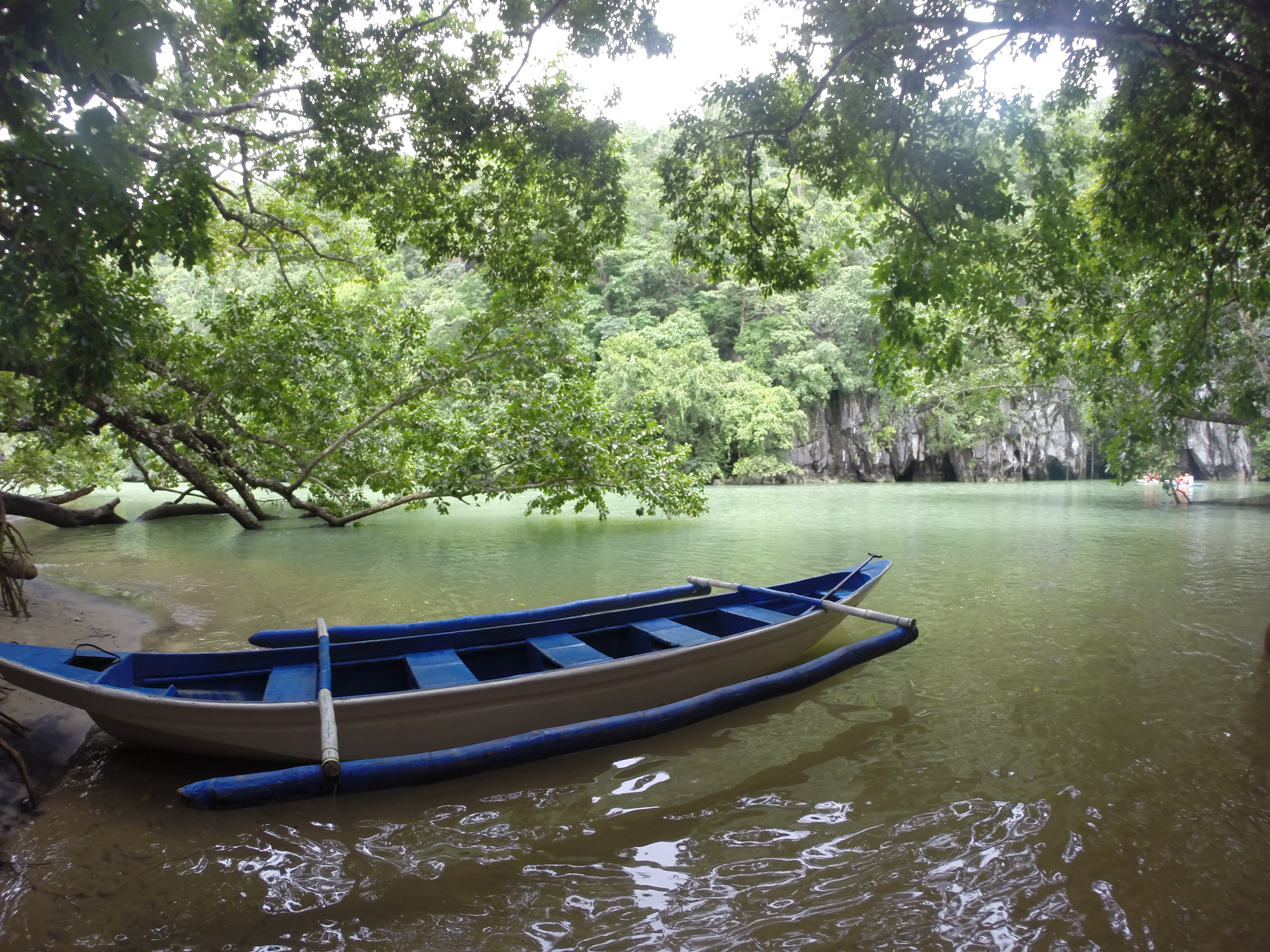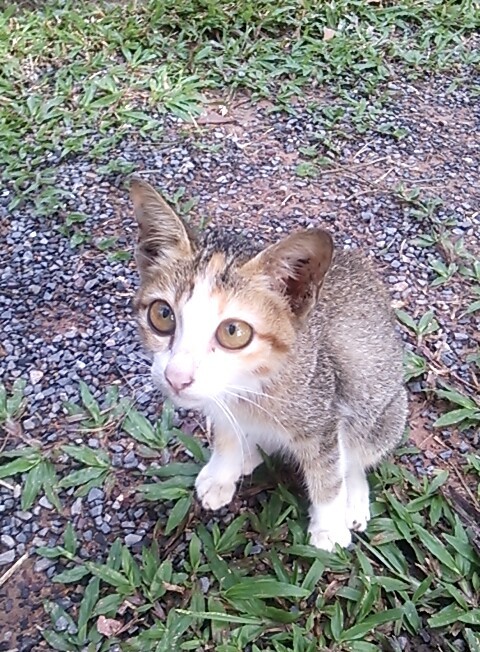“Welcome to George Town!â€
Kuala Lumpur and Penang
Upon their discovery of Malaysia in 1511, Portugal took control of the region for about a century before relinquishing control to the Dutch. Another century later, Britain began gaining control, starting with George Town, and spread their influence thereafter. As with most countries in Southeast Asia, Japan invaded during World War II. Following its conclusion, Malaysia fought for its independence from Britain and finally accomplished this in 1963. After some turmoil, Malaysia emerged as an up-and-coming and diverse nation.
Getting There and Around
Our cheapest option was to fly through several connections using China Eastern. Between Osaka and Kuala Lumpur (KL), we were in Shanghai. The Shanghai airport serenaded us with Brahms’ lullaby for the duration of our layover.
Between cities, we used inexpensive highway buses. From KL to Penang cost about 45 RM (1500円) and the seats were quite cushioned and spacious. It was one of the best buses I’ve ever traveled on.
In KL, the trains are easy to use and seem to run fairly regularly. They are also well connected to the major tourist destinations. Trains and buses stop running around 11, however, so if your flight arrives past that time you will need to take a taxi. Make sure you don’t use a tout: taxi drivers aren’t allowed to solicit you for a ride. Instead, you should get a ticket from a taxi stand.
Penang’s bus system was less navigable. The lines we took seemed to only run about once an hour and stop names are not called out. You just have to know what your stop looks like if it’s not the end of the line (which, as tourists, is pretty impractical). On the plus side, public transportation throughout Malaysia is extremely affordable.
Where to Stay
Travel Hub, in KL’s Chinatown, is inexpensive, conveniently located near three different train stations, and serves complimentary toast with jam and butter for breakfast. They also have a 24 hour reception, which was great given that we arrived our first night around 3 in the morning. The only mild annoyance is that you have to be buzzed into the building all hours of the day.
In George Town, we stayed at Wassup Youth Hostel. It was the most expensive of our accommodations, but the rooms are quite classy. We had our own bathroom and towels were included. It’s a fifteen minute walk to the Street of Harmony (one of the main attractions in George Town) and is close to the Komtar bus terminal. They also have a rainbow staircase which I enjoyed.
Malaysia’s most iconic building is the Petronas twin towers in KL. There is an observation deck from which you can look out over the city, but being the cheapskates that we are, we elected to just look upon the building from the nearby fountains. Chinatown’s Petaling Street is a little overwhelming to walk down whereas Little India is mostly shops with some Indian flair. The Central Market is near Chinatown. It seems pretty similar to other markets found throughout Southeast Asia, so it wasn’t especially exciting for me.
My favorite spot in KL is the Batu Caves. These were used as a Hindu site of worship, so there are several statues depicting Hindu deities. They also offer a tour of the dark caves for 35 RM, which I highly recommend. Our tour guide was lovely (though a little soft-spoken) and the information was fascinating, especially to a science aficionado like myself.
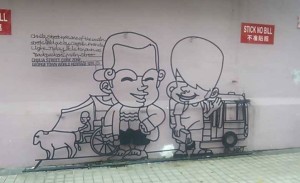 George Town is a UNESCO World Heritage city, which perhaps heightened our expectations to unrealistic levels. The street art is rather interesting, but I found that to be one of the only unique features of the city. There are several jetties overlooking the ocean. We only went down one (the longest as far as we could tell), but the experience was slightly spoiled by dogs kept in cages by someone I assumed was a breeder.
George Town is a UNESCO World Heritage city, which perhaps heightened our expectations to unrealistic levels. The street art is rather interesting, but I found that to be one of the only unique features of the city. There are several jetties overlooking the ocean. We only went down one (the longest as far as we could tell), but the experience was slightly spoiled by dogs kept in cages by someone I assumed was a breeder.
The Street of Harmony has a couple cool shops along the way, and houses a beautiful mosque near Little India. As in KL, Little India was predominantly occupied by shops (many of seamstresses’), but there seemed to be more food in George Town. One food cart had incredible samosas. Near the end of the street is a large park (that seemed to have been setting up for a concert while we were there), and Fort Cornwallis, which gives an overview of the history of George Town, especially as a British colony.
Penang Hill is another tourist destination in the area. The tram ride was a little more expensive than I’d have liked paying, especially since there wasn’t too much to see. The view of the city was nice, but didn’t warrant the cost in my opinion. We attempted going down path D of their walking trails, but found ourselves blocked by fallen trees after walking for about ten minutes. There were also terrifyingly large ants scurrying along the same path.
Truly, the highlight of George Town is its street food. There are many, many options, especially along Penang Road. My favorites included mee goreng, char kway teow, and samosas. I wish my appetite had been large enough to sample all of the delectable choices.
Last Minute Points
-Â Â Â Â Â Â Â Â Crossing streets is a free-for-all in Malaysia. If in doubt, just follow the locals.
-        McDonald’s carries chocotops, an extremely cheap yet satisfyingly delicious dessert.
-        George Town seems to have many more mosquitoes than KL. Our welcome in our hostel was finding one feasting upon my arm. I promptly killed it, though I managed to smear all of its consumed blood on Sarah’s side of the bed. Sorry!
Malaysia is a vibrant multi-cultural nation. Its food is delicious and its people a great example to the world on how to coexist peacefully with those of different backgrounds. I would love to go back and visit more places, such as the Cameroon Highlands and Borneo.
Brittany Teodorski
